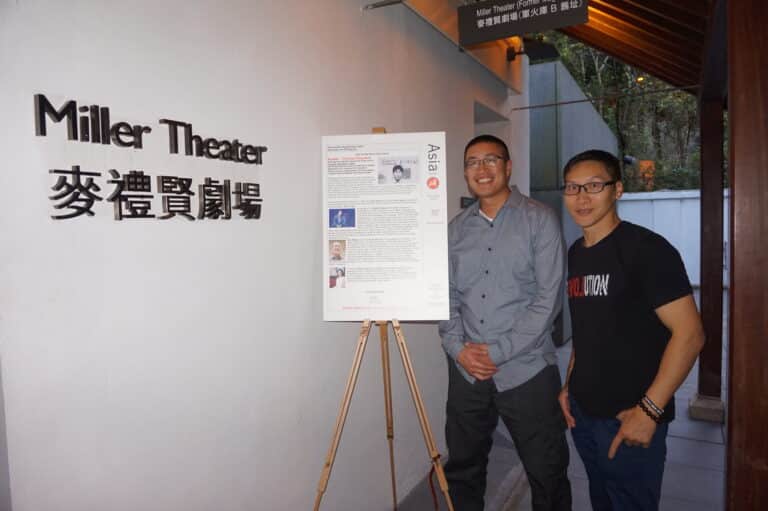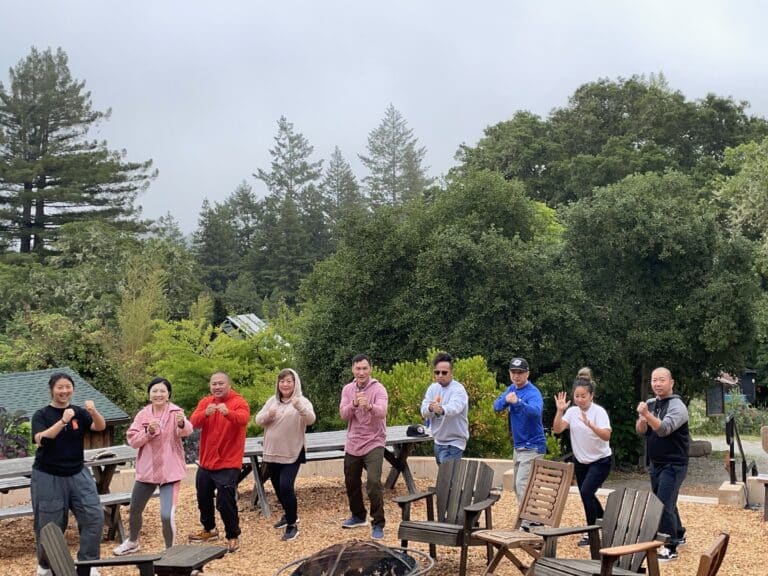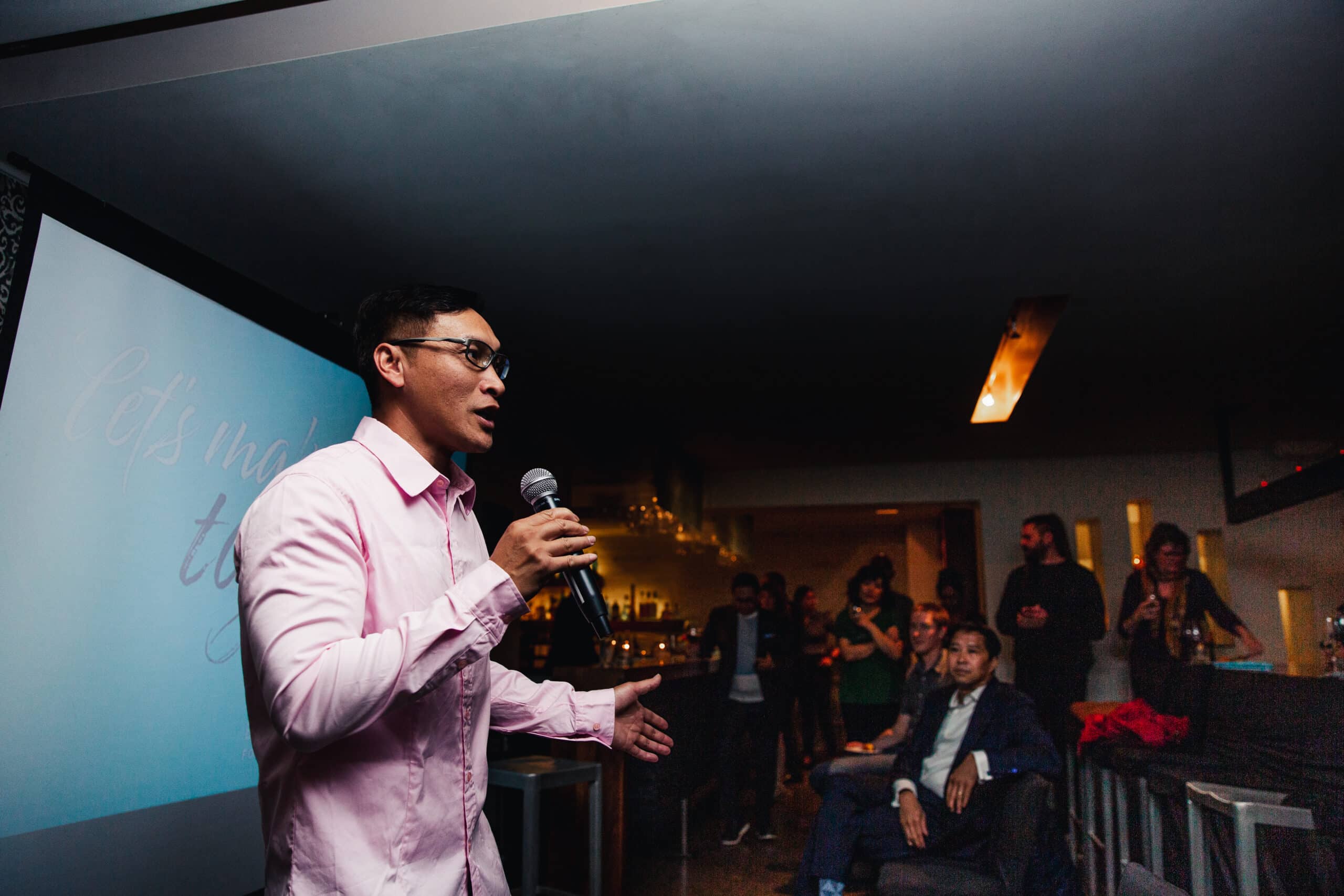Eddy Zheng, president and founder of New Breath Foundation (NBF), shares insights on the organization’s exciting plans for the next three years. Eddy reflects on NBF’s journey and discusses New Breath’s newly developed strategic framework that looks ahead at NBF’s future steps.
Part 1: Creating a Seat at the Table: New Breath Foundation’s Birth and Growth
I started New Breath Foundation (NBF) with the vision of creating a seat at the philanthropic table for Asian Americans, Native Hawaiians, and Pacific Islanders (AANHPIs) directly impacted by the criminal legal and deportation systems. These groups are often left out of critical decision-making and resourcing conversations that directly affect their lives.
I worked in youth empowerment, violence prevention, and prisoner support, and this background has enabled me to see how issues are linked on a larger scale. While I worked to raise awareness about the detrimental effects on impacted groups, especially in AANHPI communities, I continuously saw that people questioned the validity of our stories, and I sought disaggregated data that barely existed. In addition to the Asian Model Minority myth that seeks to invisiblize, there is also a cultural shame that marginalizes those who have been impacted. These conditions motivated me to create pathways for resources to flow to AANHPI grassroots organizations that support impacted communities.
Establishing New Breath Foundation was an opportunity to put work in:
- Changing the Narrative: Many conversations about criminal justice reform focus primarily on Black and Brown communities, who are overrepresented in the prison system. However, impacted AANHPI communities also face unique challenges that are often overlooked.
- Creating Resource Access: AANHPI organizations receive only 20 cents for every $100 in philanthropic funding–0.02%–with even less going to those focused on incarceration, deportation, and healing from systemic violence. The wide wealth gap erases the actual high rates of poverty and related pressing issues, burying communities’ needs.
- Interrupting Traditional Philanthropy: We unapologetically resource and advocate for organizations in various ways that interrupt traditional philanthropic practices. We’re practicing trust-based philanthropy by resourcing grassroots AANHPI organizations with large six-figure grants, appointing directly impacted individuals to our Board, Staff, and Community Advisory Committee (CAC), and practicing participatory grantmaking.
Each of these parts is rooted in cross-racial solidarity, the essential foundation for any conversation about collective liberation.
Building NBF through a Nontraditional Journey
NBF started in 2017 with no funding–just a vision and a dream–and a desire to operate differently than a traditional philanthropy model. Through sharing my story in a documentary and public speaking engagements, NBF began to gain financial support from individual donors. In 2018, we hosted our public launch in San Francisco, “Let’s Make History Together,” and began international outreach in Hong Kong. This enabled us to cultivate high-net-worth individual donors and start to build our donor base locally and abroad.

During the pandemic in 2020, amidst the Black Lives Matter movement and rising anti-Asian violence, there was a surge in attention toward social justice. This created a timely opportunity to secure resources for AANHPI communities, and our institutional partnerships grew. These circumstances led to launching our $10 million We Got Us Fund in partnership with the East Bay Community Foundation in 2021. This Fund provides six-figure grants to grassroots AANHPI nonprofit organizations to help build their capacity building and infrastructure. These grants have no written reporting requirements, demonstrating our trust in these organizations to use the funds in ways they see best.
NBF’s grantmaking process remains participatory and trust-based. Our Community Advisory Committee comprises folks directly impacted by incarceration, deportation, and systemic violence. These leaders have decision-making power over grant recommendations, ensuring we stay connected with the people working on the ground.
Our on-the-ground understanding and community relationships set us apart. They give us access to crucial information for funders, helping them identify where funding is most needed. We also have direct access to other philanthropic organizations and resources, which we always gladly share. Often, we introduce organizations and funding partners with great potential to develop alignment.
Since our first year, when we distributed just $13,000, we’ve moved over $6.1 million to grassroots organizations, many with budgets under $100,000 or entirely volunteer-run, making a meaningful difference in communities that might otherwise be overlooked.
Part 2: Introducing our Strategic Framework
At New Breath Foundation, I appreciate the collaborative environment we’ve built. Although I founded the organization, my team and I have created a space where everyone is a stakeholder. Together, we’ve co-created our team charter and values, which outline how we show up, support each other, and resolve challenges.
We saw the need for a strategic planning process to help us plan for the next several years. With the help of Frontline Solutions, we developed a strategic framework that outlines several of our key priorities for 2025-2028, which I’m excited to announce and share with you in this blog.
Priority 1: Direct Grantmaking – We Got Us Fund
Our priority is to raise funds to complete the $10 million distribution goal of the We Got Us Fund. The We Got Us Fund supports cross-racial solidarity and healing through its grantmaking to AANHPI grassroots organizations nationwide and is a model for its trust-based participatory grantmaking process.
By the end of this year, we will have 28 grantee partners across the country. We convene the grassroots organization leaders annually for leadership development, relationship-building, and healing. These gatherings reinforce connections and shared experiences, reminding us we’re not alone in our successes or challenges.

Priority 2: Shaping Narratives
At New Breath, we aim to reshape harmful narratives about AANHPI and other BIPOC communities perpetuated by stereotypes and a lack of understanding of our experiences. Recently, I was invited to a UC Berkeley fundraiser on criminal justice and was caught off guard when a senior Asian-American journalist labeled me as a “reformed felon” –a term he meant as a compliment. This experience reaffirmed that even as people invite us to share our stories and expertise, we rarely have input in how our story is shared.
Narrative change means using our lived experience, internal knowledge, and relationships with grantee and funding partners to amplify the diversity of AANHPI communities and their needs and strengths. Having someone with my background–a formerly incarcerated individual–create and lead a foundation is part of this shift. As people with intersectional identities, reshaping narratives also means challenging labels like “model minority,” often used to divide AANHPI and other BIPOC communities. By shaping our own narratives, our shared stories will more accurately reflect the communities we partner with and highlight the positive work they do through our support and resources.
Priority 3: New Breath Foundation Sustainability
As a newer public foundation and intermediary organization, fundraising and creating sustainability for New Breath Foundation are crucial to our continued success and impact. We need to be sustainable to continue funding under-estimated and under-resourced AANHPI communities. In the coming years, it will be a priority to establish what long-term sustainability looks like for us and what is needed to reach those goals.
On the organizational side, we’re also centering the people and caring about their sustainability. We need to ensure that the people doing this vital work—from NBF staff distributing resources to grassroots organizations engaging the community—are fully supported financially, mentally, or physically. Significant funding must be available to the field.
As we look at sustainability, we’re asking ourselves big questions. We’re exploring different models for New Breath’s sustainability and will continue these conversations in the years ahead.
Priority 4: Exploring a Solidarity Fund
Historically, the AANHPI community has been used as a tool of white supremacy, pitted against other communities of color through narratives like the “model minority myth” and a scarcity mentality. These divisive tactics suggest that one group is “better” than another, preventing us from recognizing shared struggles and histories. This perpetuates anti-Blackness and creates a false sense of hierarchy among communities of color. Moving beyond this mentality, we want to explore building cross-racial solidarity by partnering with Black, Brown, and Indigenous-led organizations and pooling resources to fund racial solidarity work. This work is lifelong, requiring us to continuously create tools, resources, and spaces for people to unite in the movement for racial justice.
We aim to explore the possibility of establishing this fund in the near future. It’s ambitious, especially since we’re still fundraising to meet current goals. But I also envision New Breath finishing the $10 million distribution soon, allowing us to explore new opportunities in 2026. We’re asking questions and gathering data such as, “How do we engage others across the country, gather input, and build a shared vision?” We want to know if people feel this is important, see its value, and want to be part of it.
These are our four strategic priorities, guiding our current framework and vision for the future.
Conclusion: Moving Forward Together with Each New Breath
Activist Mia Birdsong once said, “Just as we cannot survive without food, shelter, and water, we cannot survive without each other.” Our connection to each other is deeply important–it’s what makes us human.
New Breath is grateful to be in a unique position where we’ve built and are continuing to build trust with both grassroots organizations and philanthropic partners. This mutual trust allows us to collaboratively mobilize resources and organize philanthropy. As we enter the 2025-2028 strategic phase, we’re prepared to leverage our position by advancing our plans in direct grantmaking, shaping AANHPI narratives, building towards sustainability, and exploring a solidarity fund.
Each breath is a chance for a new beginning, and through our strategic framework, we’ll move forward together to build a more equitable future.

—
Read New Breath Foundation’s 2025-2028 Strategic Framework here.
